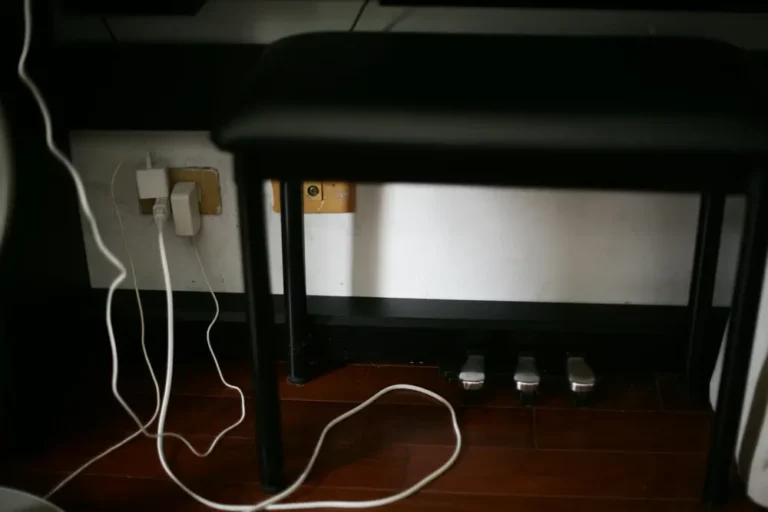Spiders on Ceiling: Facts and Behavior Explained
Spiders are intriguing creatures and are often misunderstood. These eight-legged arachnids can be found in various locations, including the ceilings of our homes. Spiders on the ceiling may startle those who are unaware of their presence, and a greater understanding of these creatures can help in dealing with them more effectively.
Different spider species have their unique behaviors and preferences when it comes to habitat. When spiders are found on ceilings, it could be due to several reasons, such as seeking prey, exploring, or finding protection from predators. Understanding why spiders end up on ceilings, as well as the type of spiders and how they contribute to the ecosystem, helps in managing any concerns regarding their presence indoors.
Key Takeaways
- Spiders on the ceiling can be a result of their natural behavior and habitat preferences.
- Understanding spider species and their roles in the ecosystem can help manage concerns.
- There are various methods available for dealing with spider infestations and preventing future occurrences.
Identifying Spiders
When it comes to discovering spiders on your ceiling, it’s essential to identify the species you’re dealing with. Knowing their features and behavior will help you take appropriate precautions. In this section, we will discuss some common spider species that tend to inhabit ceilings.
Common Species
1. Black Widow: Latrodectus hesperus. These spiders are easily distinguished by their black color and the iconic red hourglass-shaped marking on their abdomen. They prefer to spin their webs near the ground, but they occasionally make webs on ceilings.
2. Hobo Spider: Eratigena agrestis. The Hobo Spider is brown with a herringbone design on its abdomen. Although they mostly build funnel-shaped webs along walls and on the ground, they can also be found on ceilings.
3. Brown Recluse: Loxosceles reclusa. This spider has a distinct violin-shaped marking on its back, hence the nickname “fiddleback.” Brown Recluses are rarely sighted on ceilings, but it’s worth remaining cautious.
4. House Spider: Parasteatoda tepidariorum. A common grayish-brown spider with a rounded abdomen, House spiders are frequently observed on ceilings, as they spin their messy webs for catching prey.
5. Wolf Spider: Lycosidae. Wolf spiders are hairy, brown, and have a distinct design on their abdominal region. Instead of webs, they hunt their prey on the ground, making them less likely to be found on ceilings.
6. Daddy Longlegs: Pholcidae. These spiders have long, delicate legs and small bodies. Often found in corners and on ceilings, they feed on other insects in their irregularly shaped webs.
7. Jumping Spider: Salticidae. A small spider species with short legs and great jumping abilities. Jumping spiders are recognized by their large, forward-facing eyes. They don’t build webs and could sometimes be located on ceilings, where they stalk their prey.
8. Yellow Sac Spider: Cheiracanthium. Yellow Sac spiders are predominantly pale yellow with long, thin legs. They don’t construct webs but rather spin silken retreats, often found on ceilings.
By recognizing these common spiders and observing their features, you can better identify the species inhabiting your ceiling and take appropriate steps to manage them.
Why Spiders on Ceiling
Factors Attracting Spiders
Spiders are often found on ceilings due to several factors in their environment. These may include:
- Humidity: Spiders are attracted to areas with high humidity, as this helps them maintain the proper water balance in their bodies.
- Warmth: Like many creatures, spiders are drawn to warmer areas, which can lead them to seek the relative warmth of ceilings and upper corners of rooms.
- Prey: Spiders primarily feed on insects, so if there is an abundance of prey in an area (e.g., fruit flies near fruit, or insects near garbage and standing water), they will be more likely to settle there.
- Gaps and Clutter: Leaving gaps in windows or doors and having clutter around the house can provide spiders with hiding places and access to the ceiling.
Spider Behavior
Some specific behaviors of spiders may also explain their affinity for ceilings:
- Safety: Ceilings offer a safe vantage point for spiders to build their webs, away from predators and disturbances (e.g., humans or pets).
- Web Construction: Building a web on the ceiling allows spiders to effectively trap flying insects, increasing their chances of catching prey.
- Visibility: Some spiders prefer to stay out of sight and construct their webs in dark corners or crevices. Ceilings provide ample space for these reclusive spiders to go unnoticed.
Considering these factors and behaviors, it’s not surprising to find spiders on ceilings, particularly in spaces with increased humidity, warmth, prey availability, and opportunities for them to hide and build their webs.
Impact of Spiders on Ceiling
Dangerous Spiders
Some spiders that tend inhabit ceilings can pose a threat to humans. Venomous spiders, like the Brown Recluse, may occasionally be found on ceilings. If bitten, their venom can cause significant damage and, in some cases, even life-threatening complications. Spider bites from these species should be treated with urgency and medical attention is necessary.
- Brown Recluse: This spider is known for its characteristic violin-shaped markings. Its bite can cause severe skin damage and may lead to systemic symptoms if not treated promptly.
Harmless Spiders
On the other hand, the majority of spiders found on ceilings are harmless to humans. They pose no real threat beyond the irritation their presence may cause. Many of these harmless spiders are actually beneficial, as they help control insect populations in the home.
Some common harmless spiders found on ceilings include:
- Cellar spiders: These long-legged spiders are often mistaken for the dangerous Brown Recluse but pose no threat to humans.
- Daddy Longlegs: Also called Harvestmen, these spiders are not venomous and cannot bite humans.
In conclusion, while dangerous spiders can sometimes be found on ceilings, the majority are harmless and even helpful. It’s important to be cautious around spiders and seek medical attention if bitten by a potentially venomous species.
Methods to Remove Spiders
Using Vacuum Cleaner
A vacuum cleaner is an effective tool for removing spiders from ceilings. To use a vacuum cleaner for this purpose, attach the longest nozzle to the vacuum and ensure it has a narrow opening. Carefully approach the spider, pointedly directing the end of the nozzle towards it. Once it is within your reach, quickly turn on the vacuum cleaner and suck the spider into the vacuum bag. This method is swift, safe, and does not involve handling the spider directly.
Applying Insecticides
Another way to remove a spider from the ceiling is by using insecticides or bug spray. However, it is important to choose the product carefully, as not all insecticides are suitable or effective against spiders. Look for a spider-specific or general bug spray, and follow the instructions provided on the packaging.
To apply the insecticide:
- Make sure the area is well-ventilated to minimize fumes inhalation.
- Put on protective gear such as gloves, masks, and goggles, if necessary.
- Shake the insecticide can thoroughly.
- Stand at a reasonable distance from the spider and aim the nozzle of the insecticide can at it.
- Spray a sufficient amount of insecticide directly onto the spider, as well as the surrounding area, to ensure it is effectively targeted.
After using the insecticide, wait for the spider to either fall off the ceiling or become immobile. Remember to dispose of the spider properly and clean the area afterward to remove any residue from the insecticide.
By utilizing either a vacuum cleaner or insecticides, you can confidently and safely remove spiders from your ceiling.
Dealing with Spider Infestations
Having a Cleanup
Maintaining cleanliness in your home can be an effective way to prevent and manage spider infestations. Here are some steps to follow:
- Regular vacuuming: Vacuum corners, ceilings, and other areas where spiders may hide. Don’t forget to clean behind furniture and appliances as well.
- Declutter: Spiders love hiding in cluttered spaces. Keep your home organized and free of unnecessary items, especially in storage areas like attics and basements.
- Seal cracks and gaps: Check your home for any openings that may allow spiders to enter. Seal any cracks, gaps, or holes in walls, doors, and windows.
Pest Control Approach
If a spider infestation becomes overwhelming, it might be time to consider using chemical treatments or hiring professionals. Here’s what you should consider:
- Store-bought insecticides: Use chemical sprays specifically designed for spiders. Follow the instructions on the label for effective and safe usage. These chemicals can help control the spider population, but remember, they may not eliminate the problem entirely.
- Pest control professionals: If the infestation is too large or persistent, it’s best to seek help from pest control experts. They will assess the situation, identify the species involved, and recommend the most appropriate treatment plan.
Remember to prioritize your safety when dealing with spider infestations, especially if you are dealing with venomous species.
Prevention Measures
Sealing Entry Points
One of the most effective ways to prevent spiders from entering your home and finding their way to your ceiling is by sealing all possible entry points. Pay close attention to gaps and cracks in your walls, around windows, and doors. You can use caulk or other sealants to fill these openings, ensuring that there are no accessible paths for spiders.
Maintaining Cleanliness
Another vital prevention measure is maintaining cleanliness within your home. Spiders are attracted to clutter, dust, and debris, which provide them with ideal hiding spots. Make sure to regularly clean your house and remove any buildup of dust or other materials that may attract spiders. This includes:
- Vacuuming regularly and cleaning behind furniture
- Dusting your ceilings, corners, and light fixtures
- Disposing of cardboard boxes and other clutter
Using Repellents
There are various repellents available that can help in deterring spiders from invading your home. While chemical repellents may be effective, they might pose risks to your family, pets, or the environment. It is advisable to choose natural alternatives, such as essential oils or specific scents. Some options include:
- Peppermint oil: Adding a few drops to a spray bottle with water, then spraying it around your home
- Vinegar: Mixing equal parts white vinegar and water in a spray bottle, then spraying along entry points
- Citrus scents: Placing lemon or orange peels near entry points, or using citrus-scented cleaners
Taking these prevention measures will significantly decrease the likelihood of spiders finding their way to your ceiling and help maintain a spider-free home.
Alternative Methods
Vinegar can be an effective solution to deter spiders, as they dislike its strong smell. Mix equal parts water and white vinegar in a spray bottle, then apply it on the ceiling and other areas where spiders congregate. This not only helps in keeping spiders away but also breaks down their webs.
Essential oils are another alternative to repel spiders from ceilings. One popular choice is peppermint oil, known for its potent smell. Mix 10-15 drops of peppermint oil with water in a spray bottle and spray it on the ceiling and other spider-prone areas. Similarly, you can use other essential oils like lavender, lemongrass, or tea tree oil. Refresh the spray every few days for best results.
If baby spiders are a concern, a water and lemon juice mix can help to discourage them from establishing their homes on your ceiling. Combine the juice of one lemon with an equal amount of water in a spray bottle, and apply it to the desired areas. The citrus scent is a natural repellent for baby spiders.
Boric acid is another option for dealing with spiders on the ceiling. It works by dehydrating the spider’s exoskeleton, ultimately killing them. Just be cautious when using boric acid – it can be harmful if ingested or inhaled, especially for young children and pets.
Keep in mind that targeting the source of the spiders’ attraction may be more effective than using repellents. Vacuum or clean spider webs regularly, and seal cracks or crevices in the ceiling to eliminate hiding spots. Remember, consistent prevention methods can be just as crucial as treating an existing spider problem.
Conclusion
Spiders on ceilings can often cause fear and anxiety for some individuals. However, it’s important to remember that these tiny creatures play a crucial role in maintaining the balance of our ecosystem by controlling the population of other insects.
In many cases, spiders prefer to be outdoors and would rarely venture inside. Keeping windows closed and sealing gaps around the home can help prevent their entry indoors. Additionally, remember to clean the corners of ceilings regularly to discourage their presence.
Although spiders may sometimes be unwelcome inside our homes, we should try to remember their importance in our environment. It’s essential to approach the situation with a clear, knowledgeable perspective and maintain a neutral mindset when encountering them in unexpected places. By doing so, we can better manage our reactions and ensure a harmonious coexistence with these small, yet vital creatures.
Frequently Asked Questions
Are ceiling spiders harmful?
Most ceiling spiders are harmless and pose no threat to humans or pets. They can actually be beneficial, as they help control other insect populations. However, if you’re concerned about a particular spider in your home, it’s important to identify the species to ensure it’s not a dangerous one.
Why do spiders congregate on ceilings?
Spiders are attracted to ceilings because they offer safety from predators and easy access to flying insects, their primary food source. This elevated location also provides spiders with an ideal vantage point to spin their webs and catch prey.
How to remove baby spiders from the ceiling?
To remove baby spiders from the ceiling, you can either use a vacuum cleaner with a long nozzle or gently capture them using a soft brush and relocated them outdoors. You may also use spider repellent sprays, but it’s important to follow the product instructions and take precautions to avoid harming other creatures or humans in the process.
Can spiders lay eggs on my ceiling?
Yes, spiders can lay eggs on your ceiling. They typically create an egg sac in a secluded spot, like the upper corners of rooms, where they can safely lay their eggs. Keep an eye out for small, round, or teardrop-shaped sacs and remove them if you want to prevent a spider infestation in your home.
What type of clear white spiders live indoors?
One of the common clear white spiders found indoors is the cellar spider, also known as the daddy long-legs or the vibrating spider. These spiders are harmless and prefer to live in dark, damp areas like basements or cellars. They are not dangerous to humans and can even help control other pest populations.
How to prevent spiders from getting on the ceiling?
To prevent spiders from getting on your ceiling, try the following measures:
- Remove clutter and clean your home regularly to eliminate hiding places.
- Seal any cracks or gaps in walls and around windows and doors to prevent entry.
- Use a dehumidifier to reduce moisture levels in your home, as spiders are attracted to damp environments.
- Install yellow or sodium vapor light bulbs outdoors, as they attract fewer insects and, consequently, fewer spiders.
- Use natural deterrents like essential oils or vinegar to create a barrier around your home’s perimeter.





